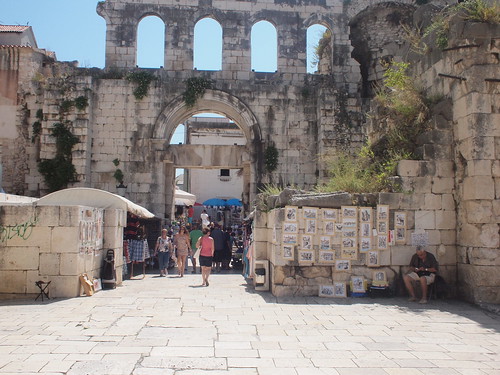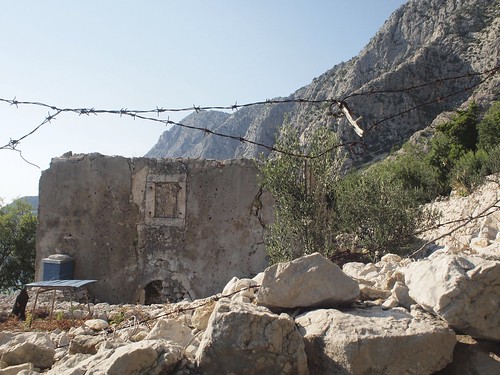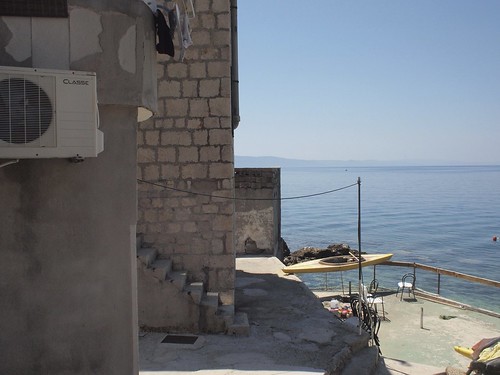
I’m breaking Croatia into two posts because my trip there had two distinct parts. Plitvice and the interior—Zagreb, the forests and villages between Plitvice and Zagreb—was the first part; the second part was the Croatian coast. There’s a place on the highway between Zagreb and the coastal city of Split where you pass through a mountain in a tunnel five kilometers long, and go for low, green forests to coarse bushes on red hills: something that looks Mediterranean, because it is. Croatia is on the coast of the Mediterranean, or, more precisely, the Adriatic, so it really doesn’t have a choice—whatever it was would be Mediterranean, by virtue of location. But it looks about as you would expect, if you, like me, had never laid eyes on any landscape that could be termed such: there are olive groves in the reddish earth, and vineyards, and sharp, brittle plants. There’s an island offshore famous for its lavender, a little sachet of which I bought for four kuna in the marketplace in Split.

I wish I could say I went to some of those islands, but I didn’t have the time; I hear they’re worth visiting, though. Instead I hunkered down in one of the smaller tourist towns tucked between the mountains that trace the coast and the stony beaches, went swimming, wandered the hills. I spent an afternoon in Split, where the marketplace and town center lie inside the ruins of a palace built by the Roman emperor Diocletian in 300 A.D. But the old things I found most fascinating were the abandoned houses in the hills above my little tourist town; big, stone things with fallen in red roofs and trees growing in what must’ve once been great rooms. They’re not from 300 A.D., of course, but there’s something about their lack of pretense and explanation. If you read about Split anywhere (including, now, here) you’ll learn about Diocletian’s palace. It’s in the dictionary on my laptop, which tells me that Diocletian was the Roman emperor who launched the final persecution of the Christians in 303. He also divided the empire in 286, between himself and Maximian. I feel like I’ve heard of Maximian, but it may just be one of those names. At any rate, Diocletian’s palace, for all it is very, very, very old, is discussed. Empty houses on hills where cows graze in olive groves are not. They could belong to anyone, tell any story, though it might just be the same old one: people move out, move on, can’t afford the place they came from. People move down the hills to the beach, where they can rent rooms to tourists who want to spend the day tanning on the white stones by the blue sea and buying ice cream at the little stand by the docks. Or something like that.







No comments:
Post a Comment